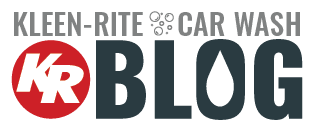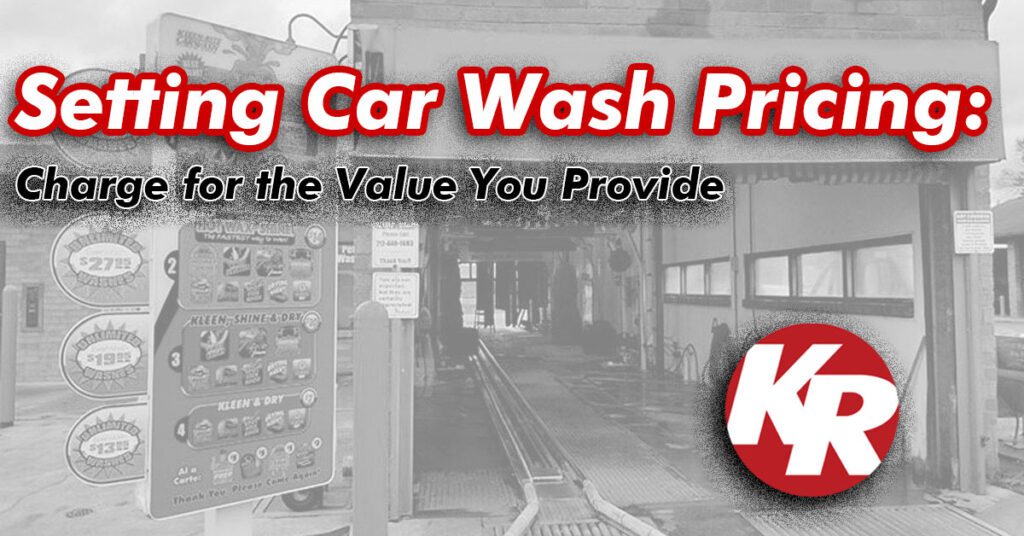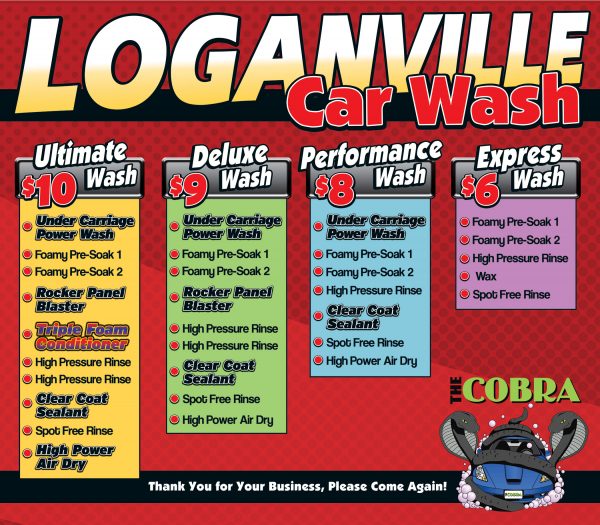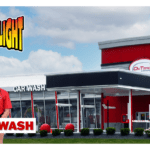What is a wash worth? What is the value you are providing to your customers?
Setting prices is a constant concern for car wash owners, both in the self-serve spectrum as well as in-bay automatic and tunnel washes. While it seems simple on the surface, car wash pricing requires a complex breakdown that remains fluid over time. “Enough to make a profit” sounds good, but so many factors go in to making a car wash profitable.
So how should you go about setting prices for your car wash, or gauging when to raise them over time?
Evaluating Costs and Adapting Over Time
Setting the price for a car wash starts by understanding one essential component – cost of operation. Knowing and fully understanding your costs is key to setting a price floor. Importantly, these costs are likely to change over the years.
Marc Tyndale has a lot of experience in this area, being both the Director of Strategic Operations at Kleen-Rite as well as a partner of Fast Lane Auto Center Car Wash. “You have to look at your facility because it is part of your pricing strategy,” he states. He goes on to explain how pricing strategies must change over time due to the evolving nature in the cost of operations. “If you have the same prices you did in 2019, it is a guarantee your pricing is too low. Expenses like gas, water, sewer, electric, equipment, repairs, labor, insurance, and consumables have all increased tremendously. So, if your car counts are the same plus or minus 10%, there is no way you have the same margin from a few years ago.”
Ultimately, your pricing should remain fluid because your costs are certain to be fluid from one year to the next.
Goals to Aim For
Defining your goals as an owner will help you determine a viable pricing strategy. A few questions to ask yourself:
- How do you want to be known, and perceived?
- Is growth important, or are you just looking for stable profit from one or two locations?
- Do you want to be perceived as value-based, or perceived as being the best wash around, one worth the extra few bucks?
Determining these goals can help you define just how much above your price floor you need to aim.
You can create a brand identity as the lowest-priced wash around, if you want. There is definitely a market for that, particularly in low-income areas. There’s an inherent risk though – if someone comes around and drops a super-low promotion or pushes you into a pricing war, value-focused customers may flip to their wash. Striving to offer the cheapest wash can be detrimental, particularly if you start underselling the value you provide.
The converse of that is tying the idea of being “the best” into having the highest prices. Someone could move into the area and put in higher prices, trying to take over your identity. You’ll then need to decide between raising the rates to maintain the perception or losing that perception to the newcomer.
On top of these two factors, there’s the idea of a growth goal. Are you looking for steady income that you can rely on, and are only worried about a single location? Well great! You simply need to price for that goal of regular income. But if you’re looking to grow, you need to price for growth, or reduce your take-home expectations.Goals can be adjusted over time and will depend on numerous circumstances. No matter what, it’s good to have a vision from the start.
Knowing Your Market and Your Customer
Before you’ve even dug a trench or laid a cinder block for your location, you’ve had to determine if the location itself is viable for your business. This means considering the likelihood of the area to support your self-service or full service wash and understanding everything from the local economy to traffic and more. This is the most important aspect of setting prices – knowing what your market will support.
Start by considering the pricing of existing washes in the region, or in similar regions. This will give you a market tolerance that you can compare to your price floor and your goals. Look at the highs and lows, and what they offer. Your pricing needs to offer value that pulls them away from washing in their driveway at home and either driving to your wash or stopping in while running other errands. Keith Lutz, co-owner of Kleen-Rite and owner of his own Loganville, PA car wash location, uses this in pricing his own wash out. “There’s certain ranges within marketplaces or geographic ranges that set some of the parameters for pricing.”
Demographics Matter for Car Wash Pricing
Jay Cogley, Kleen-Rite’s man-on-the-road, recently spent some time with the Sweetwater local chain of washes in Florida. If you’ve been to Florida, you already know it’s a hotbed for tunnel and self-serve washes. How the Sweetwater team sets pricing, according to co-owner Eddie Moy, is by comparing their offerings to local competition, as well as the demographic they’re serving.
Cogley indicates, “They have five or six washes within the Orlando area. You have different demographics – if you go up to Apopka you have a lower income demographic… then say, the Philips location has a higher income demographic.”
The result can mean varied pricing based on location. A service at the Philips location may be slightly more expensive than the identical service at the Apopka location.
At the same time, you need to discern what your customer wants. Yes, it’s easy to say “my customers want the best wash at the lowest price,” but you need to figure out which aspect is more important to them. Is it the best possible wash that is important, or is it the low price point? If it’s the former, you’ve got room to set higher prices so long as you provide a better result than the nearby competitors. If it’s the latter, you need to focus on maintaining quality while trying to coax them into the spend.
Interestingly enough, car wash competition in the area might serve as a financial boon rather than a detractor. Marc Tyndale noticed an interesting phenomenon taking place near his local wash, “Wash counts do not usually go down solely because there is a new competitor. My newest experience is that competition brought more folks out of their driveway, and it is time to reengage these users because they have not decided yet which type of car wash they like best”.
So in addition to focusing on customer demographics, it’s important to understand who you’re competing against and how you can differentiate your wash.
What Your Customers Are Paying For
This is an important distinction to make, particularly when you are comparing self-serve washes versus IBAs and tunnels.
“When you’re doing self-serve versus in-bay or tunnel,” Keith says, “With the self-serve, you’re truly charging for time. You’re renting the bay and using the functions and services for a given amount of time, and you’re paying a certain amount of money for that given time to use the wash. With an in-bay or a tunnel, you’re selecting a level of service, and you’re paying based on a level of service you’re choosing.”
Sounds like it should be simple, right? Just price out on a per-minute basis and it’s all good!
Only, it’s not that easy. For many customers, time may be more important than money. Gauging how much time your services take, and how long an average customer should spend in your bay, is important. Price it too high, and those customers may just move over to an IBA or tunnel wash where they get the same wash for less time and effort – or even worse, stay home and wash their vehicle! Too low, and you’re not making much money.
In IBAs and tunnels, you’re more concerned with providing a service and a result. That means that you need to provide a quality, guaranteed result that goes with the level of service.
What is Your Value Proposition?
There’s also the idea of value proposition – what else do you offer to your customers? As Lutz mentions, “When you look at the tunnels now, everything is a value proposition. When you look at the free vacuums that some people offer, before, they could have gotten a dollar or two from the customer to use their vacuums, but now, they just put that all into the price and you get a value proposition. Use my wash, you’re going to spend X number of dollars, you’re going to be able to use the vacuums if you want to.”
Many tunnels, IBAs, and self-serve washes are now providing courtesy towels for use, tire shine, even those free vacuums and mat cleaning. This is all value and can be folded into the cost of the wash, or the cost of the bay time.
Car Wash Package Options
Almost every tunnel or IBA car wash offers 2-5 packages of services, while some also provide a la carte add-ons. From basic dirt removal to premium wash content and underbody care, you can divvy up services as you see fit. Setting this structure up is important.
There are two things to consider. The first is decision time. Customers don’t want to be overwhelmed. They want to make their decision in 30 seconds or less. Tight, concise packages are the key to encouraging them to make the right choice. This may mean offering 3 or 4 primary packages with minor, easily understandable differences, and providing a la carte choices.
The second is the package spread. You don’t want to have too much distance between the bottom package and the top package. It needs to be easy to upsell, to skip the base option and climb up the ladder. If you have a three-wash structure where the mid-tier is double the base wash, it may be difficult for a customer to make that jump. A $12 mid-tier wash ticket is perceived differently when the base wash is $6, versus $9. At $6, that seems like a massive, maybe prohibitive leap. But when the base wash is $9, it doesn’t seem as drastic.
As an example, consider the following two package offerings.
Package 1 costs $8 and includes:
- Under Carriage Power Wash
- Foamy Pre-Soak
- High Pressure Rinse
- Clear Coat Sealant Protectant
- Spot Free Rinse
- High Power Air Dry
Now, here’s Package 2 which costs $10:
- Under Carriage Power Wash
- Foamy Pre-Soak 1
- Foamy Pre-Soak 2
- Rocker Panel Blaster
- Triple Foam Conditioner
- High Pressure Rinse
- Clear Coat Sealant Protectant
- Spot Free Rinse
- High Power Air Dry
With such a minimum in price difference, the customer will feel they’re getting a lot more value from the experience by opting for the second package. That extra value can come in the form of things like ceramic sealant, undercarriage cleaning, paint shine, and other specialty services. And ultimately, you’re realizing more profit from the transaction.
Membership Curveball
One of the biggest curves thrown into the setting of prices in recent times has been the growth of unlimited membership plans. It has been a game changer for the industry. Memberships provide guaranteed monthly revenue and bring recurring visits, especially from folks who pay close attention to the exterior condition of their vehicles. They influence members to try out premium services and add-ons – “Hey, this wash is free, let’s try the wheel and tire shine add-on or the wax!” – while locking business away from your competition.
So how do you price a membership? It’s not about discounts Instead, the common suggestion is pricing a membership at the cost of between two and three washes in a month. If they visit more times than that, it’s a minor uptick in product cost – but in all likelihood they will visit that amount of times, or even less. Keith puts it plainly, “You get a month when they only wash one time, you’re still getting your membership fees. That’s huge.”
Avoiding the Margin Trap
It can be easy to fall prey to the margin percentage trap. Some wash owners simply see their costs, determine the margin they need, and as long as it fits the market, they just roll with it. Simply thinking “I need to make a certain percentage margin so that’s where I’ll set my price” can result in leaving potential profits on the table. You can’t be afraid of making more profit! Focus on the value you’re giving your customer and set and raise prices accordingly.
Perhaps setting your wash price at $8 to start off seems like it will cover your desired margin. But if everyone else in the area is offering $11 or $12 base washes? This means there is some elasticity for you to play with – why not charge $10 and make that extra $2 per wash while still undercutting the competition? Or, potentially, improve your product offering and sit within that range, knowing you offer better results than they do while still exceeding your margin.
Your Car Wash Pricing: It’s a Long-Term Strategy
While setting the starting price is important, detailing a long-term pricing strategy is integral to sustaining and growing your business.
As Lutz points out, “Car wash owners in our business tend to be too slow to raise prices. They need to look at the value proposition that they are giving their customers and understand what that value proposition is, and a lot of time we in this industry tend to undervalue our services.” Making this a reoccurring evaluation is also important, as Marc notes “I recommend looking at pricing as part of your annual review”.
One factor to pay attention to is revenue versus profit. Revenue is the tickets you write, or how much you’re making hourly on your bays. Profit is what you’re taking home from that after expenses. Working on a sliding scale alongside demand and costs, you need to find a mix that maximizes both of these. When it comes to raising prices, you want to slide that profit and revenue up without causing the others to slide down. It’s delicate, but doable.
Setting prices for your car wash might sound like a complicated ordeal, but it doesn’t really have to be. A well-planned pricing structure, with an eye on the future as well as your current surroundings, is the foundation for business success!
Make Kleen-Rite your reliable car wash supplier and increase your profit even more!
Check out these related blog posts
Car Wash Customer Loyalty Programs













